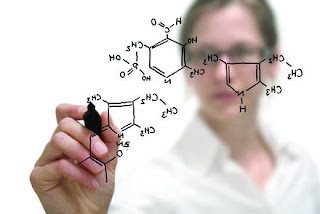UNESCO
"The new 2030 Agenda for Sustainable Development underlines the power of science as a driver for human rights and dignity, poverty eradication and the protection of the planet.
On this first International Day of Women and Girls in Science, UNESCO’s message is clear – the new Agenda will not meet its promise without investing in women’s and girls’ empowerment through and in science.
More than ever today, the world needs science and science needs women."
Irina Bokova, Message
Today the 11th Febraury, we are celebrating the International Day of Women & Girls 2016.
The commemoration of the day will also enable people worldwide to discuss the many existing challenges and issues facing women and societies today, and then to determine the indispensable solutions, actions, policies and programmes to overcome these issues through science-based accomplishments in sustainable development by women in science.
Inclusion of an International Day of women and Girls in Science annually on 11 February during the annual session of the Commission on Social Development would bring the issue of advanced education in all scientific fields to wide public attention and help to popularize many of the SDGs in the mind of the greater public.
Commemorating the very first observance of the day, a High-Level Forum is being held on 11 February 2016 at the United Nations Headquarters by The Royal Academy of Science International Trust (RASIT) and DESA-DSPD.
Science and gender equality are both vital for the achievement of the internationally agreed development goals, including the 2030 Agenda for Sustainable Development.
The theme:
Over the past 15 years, the global community has made a lot of effort in inspiring and engaging women and girls in science.
Unfortunately, women and girls continued to be excluded from participating fully in science. According to a study conducted in 14 countries, the probability for female students of graduating with a Bachelor’s degree.
Paragraph 119 of the Synthesis Report states 2015: “we have a long way to go to reach the necessary level of participation of women and girls in science, technology (including ICTs), engineering and mathematics for the world in the 21st century."
The Sustainable Development Goals (SDGs) to a great degree need a strong science base, and this cannot be achieved at any level unless girls and women have an incentive, such as recognition and the example of role models, to have in front of them.
Education:
The day must be inspirational for girls to study STEM. Promoting the work of women in science and encouraging girls to enter the sciences is important for achieving the Global Goals for Sustainable Development.
So, the gap of girls and young women in science and techonology in the 21st century is still a big problem. We must motivate the young girls to pursuit Science studies.
Girls do as well as boys in science and maths at school but many more boys go on to further study science, technology and engineering.
So, the gap of girls and young women in science and techonology in the 21st century is still a big problem. We must motivate the young girls to pursuit Science studies.
The Hypatia project (EU) encourages young women (secondary education, college, young researchers) to choose Science in their future careers.
Hypatia was a mathematician, astronomer and philosopher, born in Greece around AD 350-415. Her person and way of thinking inspires this new Horizon 2020 project.
HYPATIA is aimed at girls aged thirteen to eighteen both in and out of the educational setting. Its primary goal will be to interest these teenagers in STEM (science, technology, engineering and mathematics) degree courses.
Statistics show that there is a noticeable gender gap, with much fewer girls choosing to study for STEM degrees. So the need for change is becoming increasingly urgent.
There's an interesting article I wish I weren't the only girl in my computer science class that share some toughts of a 17 years-old girl on the gender gap in STEM:
"Stem subjects are still male dominated: nearly four out of five of those who took A-level physics in 2012 were male. And only about half of female Stem graduates go on to work in Stem roles.
This may be due to lack of encouragement from parents, teachers or classmates, or down to the individual – they simply believe they are better suited to a different role."
Activities:
As STEM teachers and students you can Act!
- Make a Pledge
- Share your Activities
- Design a Poster
- Video
- Photo
- Find out How
Resources:
- Women in Science: Explore the data Interactive tool produced by the UNESCO Institute for Statistics (UIS).
- Inspiring stories from women scientists (International Centre of Theoretical Physics)
"The International Day of Women and Girls in Science will directly influence the perception of women in science for sustainable development and elevate the contributions of women in science, past, present and future that equitably reflects the aspirations and ambitions of all global citizens."
G-Souto
11.02.2016
Copyright © 2016G-Souto'sBlog, gsouto-digitalteacher.blogspot.com®
Schools : International Day of Women & Girls in Science by G-Souto is licensed under a Creative Commons Attribution-NonCommercial-NoDerivatives 4.0 International License.




No comments:
Post a Comment